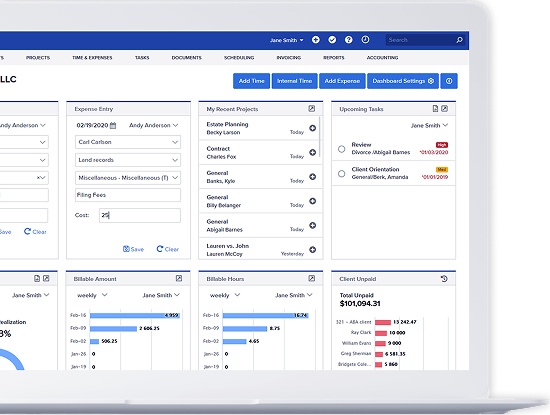
The best legal software does this one thing well
03/10/2021 By Andrew McDermott
Legal software is complicated and there’s a lot of ground to cover. Take billing for example. Firms need to manage billable rates for each of the timekeepers in your firm, bill in the appropriate billing increments and ensure timekeepers are tracking their time properly.
That’s just billing.
Here’s the problem plaguing legal software, it frequently gets in the way.
The best legal software disappears
Here’s a scenario firms deal with regularly. Let’s say your firm is asked to represent both a company and a client suing that company. That’s a straightforward conflict of interest, right? Here’s how the best legal software performs in that situation.
The best legal software disappears.
When I say it disappears, I don’t mean it’s suddenly invisible; I mean the software behaves in such a way that it’s easy for people to accomplish the tasks they need to complete — say a conflict check — with minimal interruptions. This doesn’t seem like a significant problem, does it?
Imagine that you’d like to check for a client conflict. Your practice management software doesn’t really do that, so the attorneys handling a client matter will have to:
- Remember to search for a potential conflict, which let’s be honest, probably won’t happen as often and
- Run a manual conflict check using a series of outdated checklists.
What’s the potential impact here? Increased liability and a potential malpractice suit if something happens to go wrong. This may sound a bit dramatic and far-fetched. Until you read the story Joseph O’Neill shared at The Expert Institute:
“This case involves an insurer that was sued by a law firm for their alleged failure to pay legal fees, which then counter-sued alleging legal malpractice on the part of the law firm. The insurance group was responsible for providing medical malpractice insurance to a hospital network, and the events of the incident in question were initiated in response to a lawsuit against one of the network’s physicians. In that suit, another doctor was also sued, however, she was not covered by the same insurance group.
Nevertheless, both physicians were represented by the same law firm in the malpractice suit, in spite of the fact that they had conflicting interests. There was apparently minimal effort on the part of the law firm to compartmentalize the work done for each physician, and the nature of the conflict was not made clear to the insurance provider.”
As a result of this conflict of interest, the insurance company was hit with a “significant verdict.” The insurer refused to pay their legal fees, and then they counter-sued alleging legal malpractice. What a messy yet avoidable disaster.
What should your legal software do?
Remind you that there’s a potential conflict, quickly identify conflicts via a search, and provide you with the data you need to correct the problem. Can you see the difference? It’s subtle, but it’s there. The best legal software works behind the scenes ensuring firm standards are met.
The best legal software acts as a silent guardian. Do you want timekeepers in your law firm to bill in 15-minute increments? Need your software to point out potential conflicts? Find unbilled time/expenses? The best software handles it quietly, with minimal disruptions to your law firm.
What about transitional pain and upfront work?
Transitional pain, also known as switching pains, is inevitable. Upfront work is a necessary component that establishes standards and guidelines; the guidelines your software will use to keep everyone in your firm on the same page.
Once that’s established, the best software disappears. It works behind the scenes, ensuring that your law firm performs as expected when expected. Poor software doesn’t function this way. It gets in the way, making it difficult for your firm to keep your team on the same page.
Your legal software should disappear
Your software should provide you with the alerts needed to address an issue or concern. Then it should disappear into the background, acting as the silent enforcer in your firm.
Legal software often gets in the way, complicating a firm’s day-to-day operations. As we’ve seen, that’s a problem for most firms. The best legal software does one thing well. It enforces the boundaries you’ve set, and then it gets out of your way.
Law firms are complex but your software shouldn’t be. Choose the right legal software, and you’ll have the tools you need to grow your firm, no complications necessary. Let us show you how Bill4Time operates in the background, letting you focus on practicing law, while allowing you to collect more from your clients through accurate billing habits.



